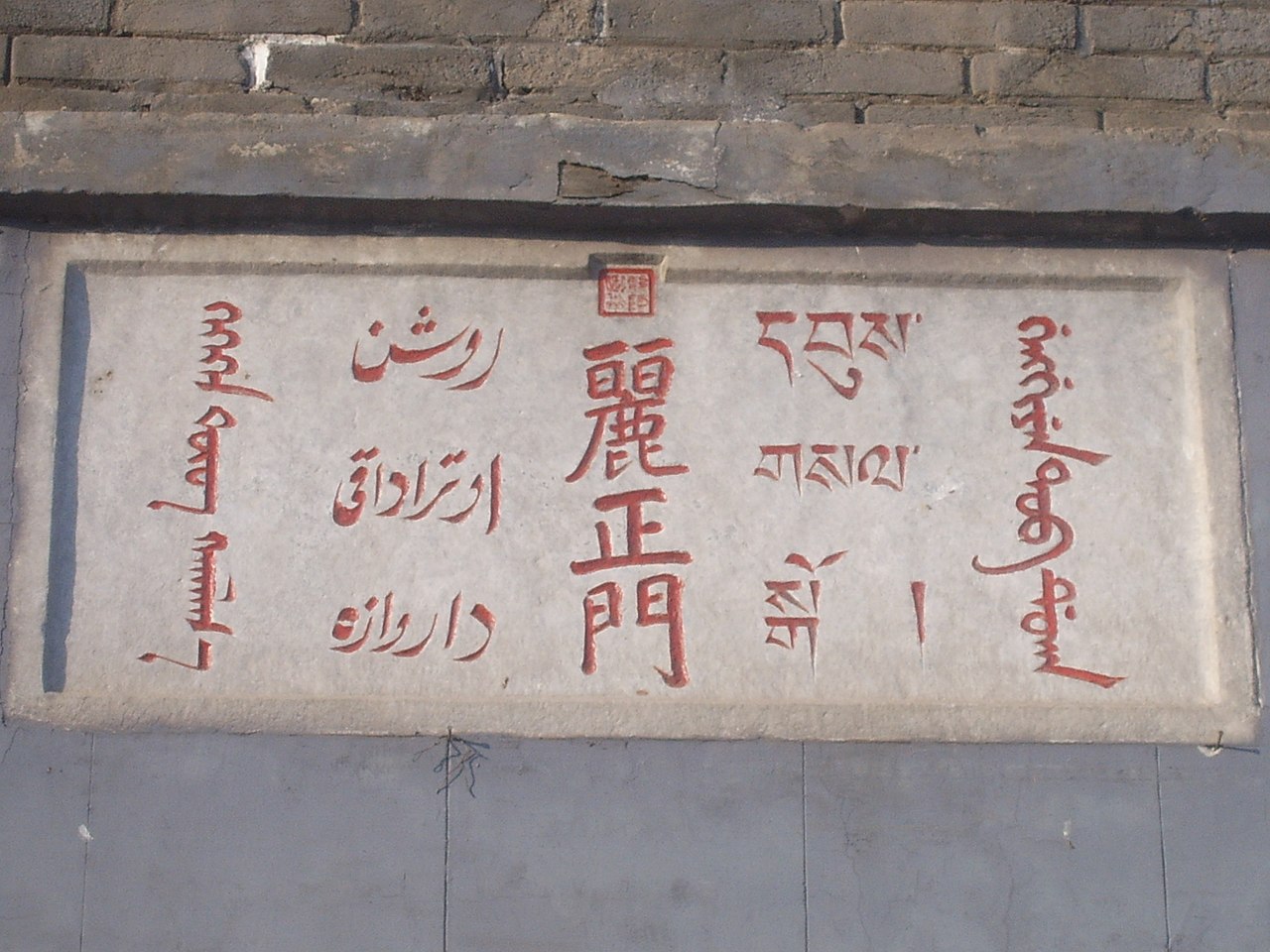Chaghatay is a now dead language. It was used in Central Asian area among Turkic nations that inhabited there. It is believed to be related to Uzbek, Uyghur and Turkmen that are spoken by the Turkic people living in this area.
The language got its name as the spoken area was previously Chaghatai Khanate, which was part of the Mongolian Empire that swept Eurasian world in 13th century CE. As it was at the crossroad of civilizations nearby, it got influence from China, Persia and Russia. It adopted Persian alphabet to write, and was a lingua franca among businessmen in Central Asia.
The fall of Chaghatay language came after the Russian revolution and the foundering of USSR. With strong influx of Russian-speaking people and influence from Russian culture, Chaghatay language was no longer used and soon dead.
Modern Uyghur language inherits the writing system of the Chaghatay language.

Name stone of a gate in Summer Palace in Chengde, Hebei, China. The name was engraved on the stone in 5 different languages, the second from the left was Chaghatay language. Those 5 languages indicate 5 major nations ruled by the Emperor of Qing Dynasty Han(Chinese), Tibetans (Tibetan), Manchurians(Manchu), Mongolians and "Hui" (Muslims in Northwest China and Central Asia, Chaghatai)

